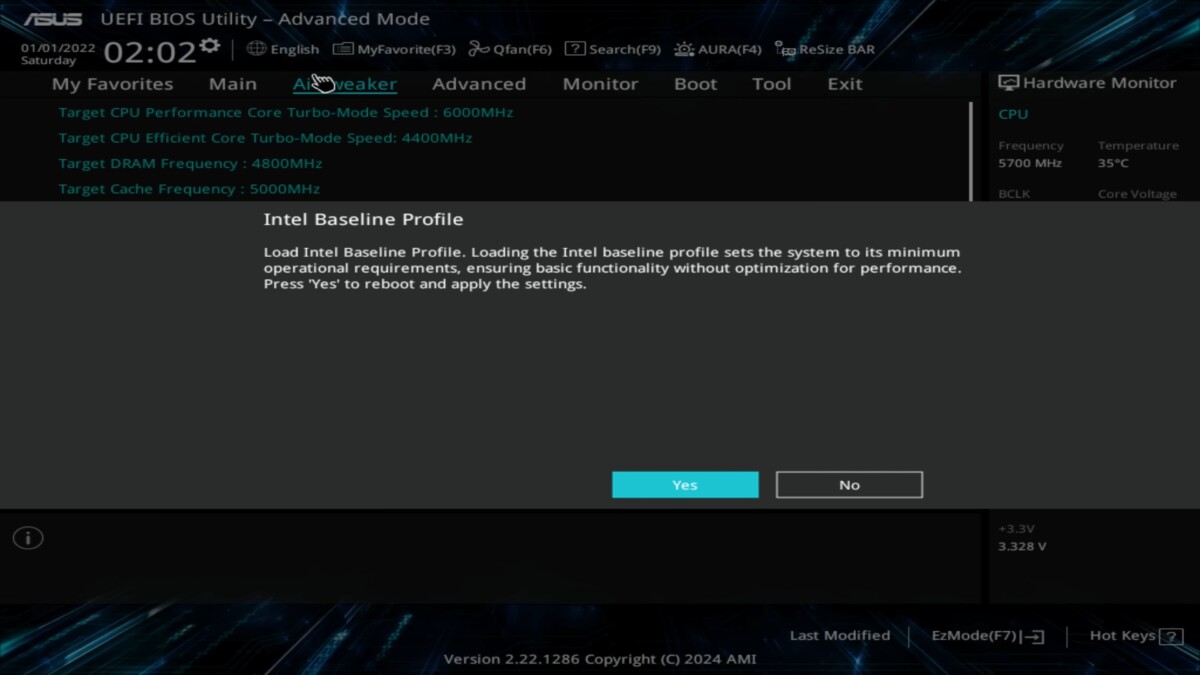In a second press release addressing the problem of processor instability, Intel accuses motherboard manufacturers of pushing these chips beyond its recommendations. But is the company really that innocent?

This is a case that has been going on for over a month now, with many players reporting stability issues with the game on their high-end Intel processors, namely the 13th and 14th generation i9 models (13900K and 14900K).
The error may be the motherboards’ default power settings being too high compared to Intel’s default specifications. Since then, several manufacturers have released an update to their BIOS in beta, offering a “Baseline Intel Profile” option to fix stability issues by reducing the power consumption of Intel processors.
In a press release published on a German website Igor’s laboratoryIntel places the blame on its motherboard manufacturing partners, who thus exceeded its own recommendations in their BIOS.
Are motherboard manufacturers to blame?
In this press release we can read that Intel has identified the phenomenon of instability among users of its processors in “ operating conditions beyond specifications resulting in sustained high voltage and frequency during periods of high heat “.
More precisely, problems occur on motherboards that allow overclocking of their processors, namely the Pro and Gaming models popular among gamers. Thus, on most of these motherboards for the 600 and 700 series chipsets, some default settings go beyond the recommendations, such as disabling the thermal protection features (Thermal Velocity Boost, Enhanced Thermal Velocity Boost) and, most of all, the increased power limit settings. PL1 and PL2.

Finally, Intel recommends that users AND motherboard manufacturers follow their own specifications to ensure the stability of their processors in the most demanding applications. Asus and Gigabyte were the first to offer a new BIOS with this famous “base profile”, and MSI is also working on a future update.
But while Intel seems to blame manufacturers for being too greedy, the situation is much more complicated than it seems.
Intel is not so innocent
In a video dedicated to this issue, the YouTube channel Hardware Unboxed tested for the first time the impact of the Intel Base Profile option on the real-world performance of high-end Intel processors. However, this profile looks different depending on the manufacturers, who even after this update do not seem to agree with Intel’s specifications, although they are clearly stated on its website. Gigabyte would have introduced much greater restrictions in their update, resulting in performance drops of up to 13 and 14% in games such as Cyberpunk 2077AND Star field.

Source: Hardware Without the Box

Source: Hardware Without the Box
However, the situation has been going on for many years, be it the 8th or 10th generation Core i9, as well as the latest models that implement the big.LITTLE operation inspired by the ARM architecture. Motherboard manufacturers almost always implemented PL2 (Power Limit 2) settings that were flexible enough to improve performance, and this situation was in Intel’s favor in benchmarks and various benchmarks.
Steve Walton, who also works on the site TechSpot , does not hesitate to recall the responsibility of Intel, which has never evaluated these parameters “outside its specifications.” In an interview with the siteAnandtechIn 2019, on the eve of the release of the 10th generation Ice Lake processors, one of the brand’s key engineers, Guy Therrien, very clearly insisted on this topic:
Even with these values you are not outside the specs, I want to make this clear: you are within the specs but getting higher turbo duration. […] So if the motherboard manufacturer leaves the CPU at normal turbo boost numbers but states the power limit is 999W, there is no need to change the overclock setting, so it is within spec.
Specifically, if motherboard manufacturers offer settings above Intel’s recommendations that do not involve overclocking the processor, then the chip remains within Intel’s specifications (conforming to specification).
If we are in this situation now, then on the one hand, motherboards are clearly too demanding of these processors, which can cause premature silicon degradation and therefore instability problems. But on the other hand, Intel apparently turned a blind eye to a situation that suited it quite well in tests against AMD.
Intel has promised to issue a new, more comprehensive press release in May with new BIOS recommendations for its processors.



